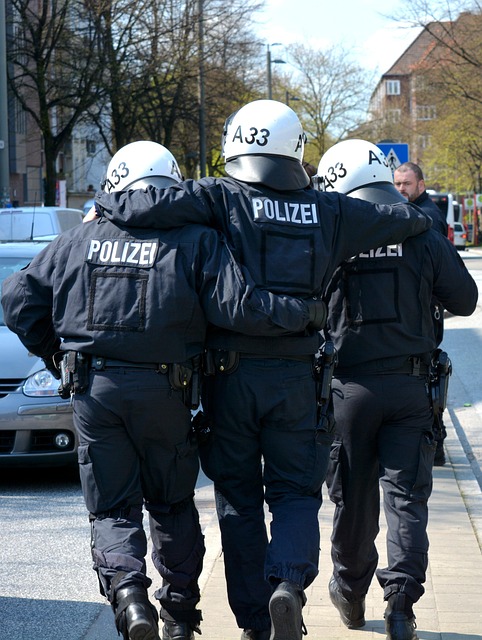Motorcycle Lane Splitting Accident: Legal Timeline & Regulations

Motorcycle lane splitting, governed by varying regional laws, offers safety benefits but carries leg…….
Motorcycle lane splitting, also known as ‘lane filtering’ or ‘in-between lanes driving,’ is a practice where motorcyclists navigate through multiple traffic lanes, often in congested urban areas, by positioning themselves between vehicles. This technique has sparked intense debate and gained global attention due to the potential safety risks and benefits it presents. Lane splitting accidents, resulting from this behavior, are a critical aspect of road safety that requires comprehensive understanding and strategic mitigation. In this article, we will delve into the world of motorcycle lane splitting, exploring its definition, impact, technological solutions, regulatory frameworks, and the challenges they pose. By examining real-world examples and case studies, we aim to provide valuable insights for policymakers, transportation planners, and cyclists alike.
Motorcycle lane splitting involves a motorcyclist driving between stationary or slow-moving vehicles in multiple lanes of traffic, often at low speeds. This practice is primarily observed in urban environments with heavy traffic congestion, where the road layout allows for it. The key elements of a lane splitting accident include:
Lane splitting has been a part of motorcycle culture for decades, particularly in regions with high motorcycle penetration rates. In the past, it was more of an informal practice, driven by the need to navigate crowded city centers efficiently. However, with growing urban populations and increasing motorcycle ownership worldwide, lane splitting has gained significant attention from researchers, policymakers, and road safety advocates.
The practice has both advantages and drawbacks:
The influence of motorcycle lane splitting accidents is not limited to any specific region; it has global implications. Different countries have varying perceptions and regulatory approaches towards this practice:
| Region | Regulatory Approach | Public Perception |
|---|---|---|
| North America | Generally prohibited, considered dangerous | Negative, often viewed as aggressive behavior |
| Europe | Legal in some countries (e.g., Germany), regulated in others | Mixed; perceived as a skill by enthusiasts, safety concern by authorities |
| Asia | Legal and common in many cities (e.g., Japan, Thailand) | Positive among cyclists, but generates debate over safety |
| Australia/New Zealand | Legal with conditions, heavily monitored | Increasing acceptance due to successful safety campaigns |
These variations highlight the need for evidence-based policies that consider local traffic patterns and cultural norms.
The economic aspects of motorcycle lane splitting accidents are multifaceted:
While lane splitting can contribute to reduced traffic congestion and improved fuel efficiency, it also presents economic challenges:
Technology plays a crucial role in both enabling and enhancing motorcycle lane splitting safety. Here are some significant developments:
Regulatory frameworks play a vital role in shaping the landscape of motorcycle lane splitting accidents:
Despite its potential benefits, motorcycle lane splitting faces numerous challenges and criticisms:
Amsterdam’s cycling culture has led to innovative solutions for lane splitting. The city’s wide streets and dedicated bike lanes make it relatively safe for cyclists to position themselves between traffic. Local authorities have implemented the following measures:
Tokyo’s high density and efficient traffic flow make it an ideal testing ground for lane splitting. The city has:
The future of motorcycle lane splitting accidents looks promising, with several potential growth areas and emerging trends:
Motorcycle lane splitting accidents are a complex issue that requires a nuanced approach to safety, technology, and regulation. By examining real-world examples and learning from successful applications, we can navigate the challenges and opportunities presented by this practice. The future outlook for lane splitting is positive, with potential for improved safety standards, efficient traffic management, and enhanced mobility in urban areas. As we continue to explore innovative solutions, it is essential to foster dialogue between cyclists, motorists, policymakers, and researchers to create a safer and more inclusive road environment.
Q: Is lane splitting legal in my country?
A: The legality of lane splitting varies globally. Some countries explicitly prohibit it, while others allow it under specific conditions. Check local regulations or consult transportation authorities for accurate information.
Q: How can I stay safe when lane splitting?
A: Prioritize safety by staying alert, being visible to other drivers, and using defensive riding techniques. Wear appropriate gear, maintain your motorcycle’s safety features, and consider advanced training courses.
Q: Can technology fully address the safety concerns of lane splitting?
A: While technology can enhance safety through improved road infrastructure, communication systems, and vehicle safety features, it cannot eliminate all risks. Human behavior and awareness remain crucial factors.
Q: Are there any benefits to lane splitting for traffic congestion?
A: Yes, lane splitting can potentially reduce traffic congestion in heavily packed urban areas by allowing cyclists to navigate through multiple lanes efficiently, opening up space for other vehicles.
Q: How can I educate myself and others about safe lane splitting practices?
A: Take training courses, attend workshops, and participate in community events focused on cycling safety. Share knowledge with fellow cyclists and drivers to foster a culture of awareness and respect.

Motorcycle lane splitting, governed by varying regional laws, offers safety benefits but carries leg…….

Motorcycle lane splitting, though legally ambiguous, involves riders navigating between traffic lane…….

Motorcycle lane splitting, though seen as a way to bypass traffic, poses significant risks, leading…….

Motorcycle lane splitting, while seen as a traffic-beating tactic, significantly increases accident…….

Motorcycle lane splitting, while potentially saving time, carries significant risks with challenging…….

Motorcycle lane splitting, while a popular practice among riders for smoother journeys, poses signif…….

Motorcycle lane splitting, a contentious practice on crowded highways, divides opinion between safet…….